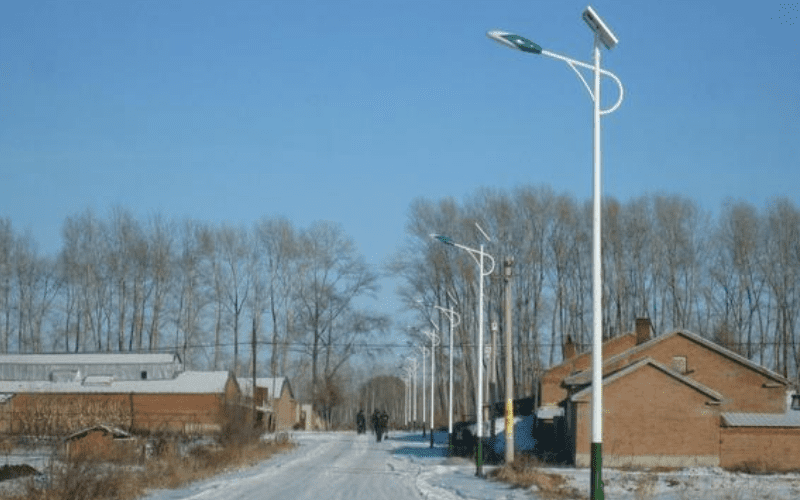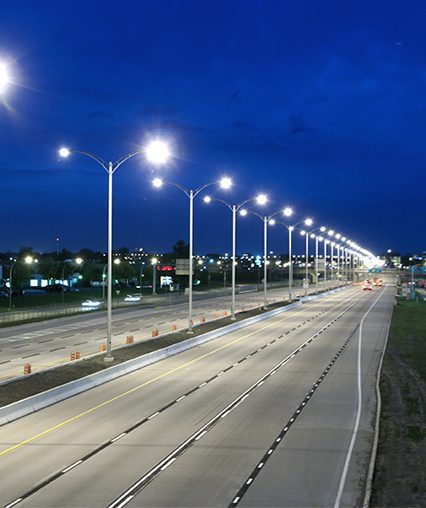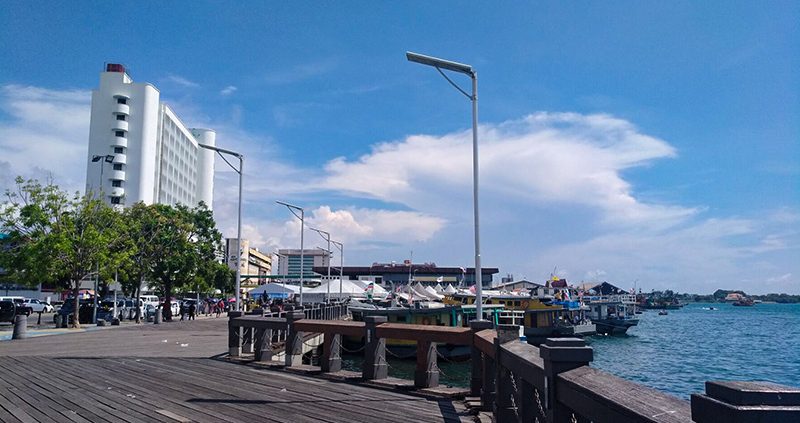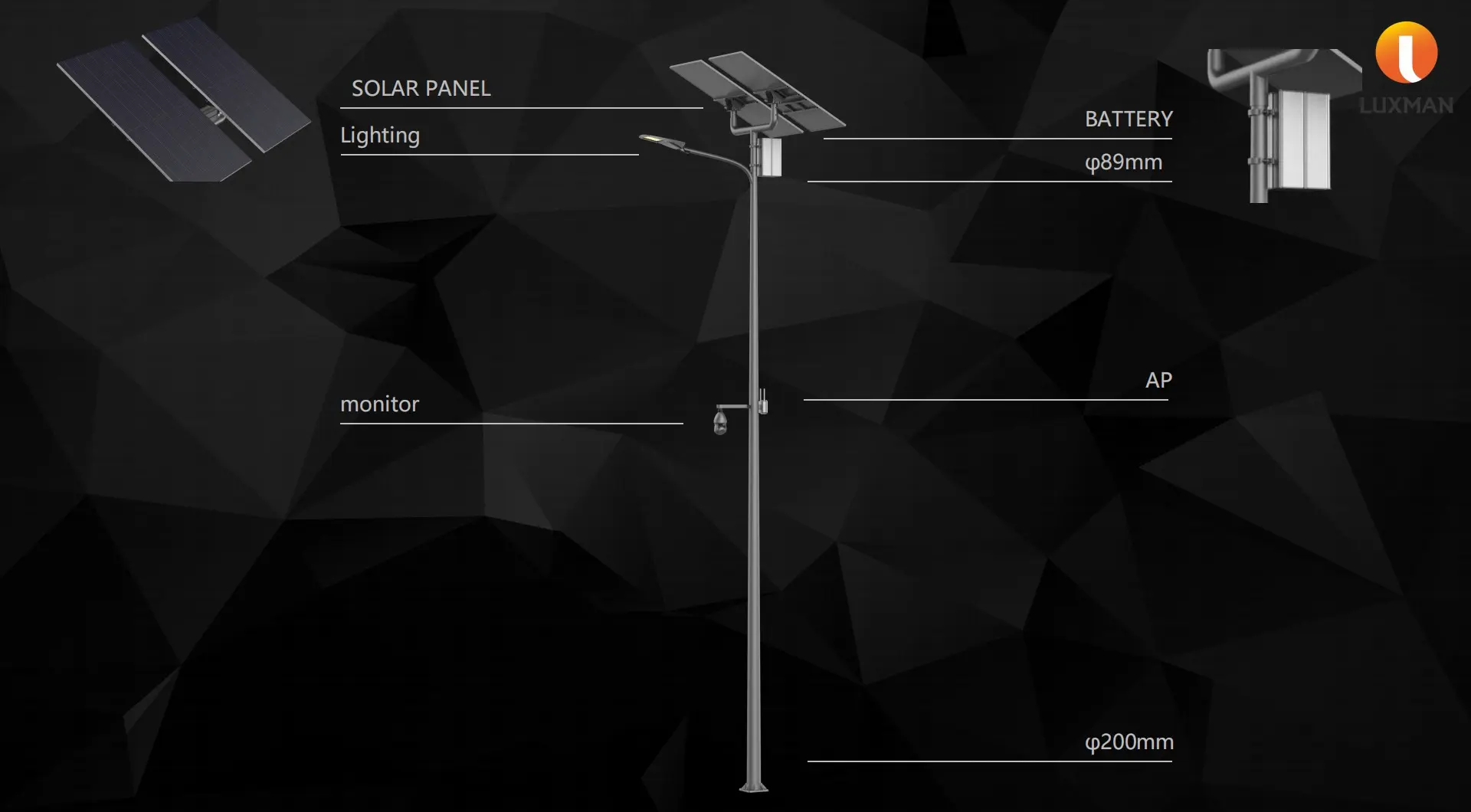How to calculate the height and distance of solar street light pole?
Solar street Light Height Calculation
In determining the installation height of solar street lights, if the height of the lamp poles is between 3 to 4m, the formula H≥0.5R can be used. Here, R is the radius of the illumination area, and H is the height of the street light pole.
If the height of the light pole is higher, such as over 5m, an adjustable lamp panel can be used to regulate the illumination coverage to meet different lighting needs. This adjustable panel can be moved up and down on the pole to achieve the best lighting effect.

Solar street Light Distance Calculation:
For general road lighting, when the width of the road does not exceed 15m, lighting is usually arranged on one side. distance between two street light pole on this side also depends on the height of the light poles; for poles shorter than 6m, the spacing can be set at about 10m, while for poles taller than 6m, the spacing can be between 10-25m. The specifics should be determined based on the actual site conditions.
For light poles over 10m in height, the general formula is the spacing between lights = pole height × 3.
Additionally, for solar street lights with an 8m pole, the spacing between lights should be 25-30m using cross illumination. This method is suitable for roads that are 10-15m wide. For solar street lights with a 12m pole, the longitudinal spacing between lights should be 30-50m with symmetric illumination, and road illumination width needs to exceed 15m.

Solar Street Light Pole Installation Height and Spacing Recommendations for Different Situations:
Based on construction drawings and the survey of the geological conditions of the site, and in places with no top obstructions, the installation location of solar street lights should use a reference spacing of 10-50m. Specific requirements should be confirmed with the engineer according to project needs, or by contacting us.
- For average road widths of about 3-4m with pole heights of 3-4m, the installation distance should be 10m;
- For average road widths of about 5-7m with pole heights of 5-7m, the installation distance should be 10-25m;
- For average road widths of 8-12m with pole heights of 8-12m, the installation distance should be 30-40m;
- For main traffic arteries about 20m wide with pole heights of 12-14m, the spacing should be at least 40m.
When the width of the road exceeds 15m, and there is heavy vehicle and pedestrian traffic that requires aesthetic consideration, staggered lighting on both sides or symmetric lighting can be adopted. In actual design work, one often encounters many objective constraints. For instance, when the road is wide but lighting can only be installed on one side, the tilt angle of the light fixtures can be increased, generally up to a 15-degree angle. If the tilt angle is too high, the luminous efficiency of the fixtures decreases, and glare can become a problem for visibility.
Different Location street light spacing and height:
- Parks and scenic areas: Suitable for installing solar street lights around 7m tall, the installation distance should be 10-25m;
- Along national highways: Height should not be less than 12m, with a spacing of at least 40m;
- City side roads: Height should not be less than 10m, with an installation distance of 30m;
- Rural roads: Heights of 6m or more, with an installation distance of 25-30m. Additional street lights should be installed at corners to avoid blind spots;
Four-lane roads or main traffic arteries: Height of 8-12m, with axial symmetric illumination, and an installation distance of 30~50m.
For arrangements with lights on both sides, if the spacing between light poles is too great, it is recommended to use a cross arrangement, as the reason for large spacing is often due to insufficient budget or a lower level of luminous intensity.
The latest solar street light pole is recommended
This smart solar street light pole can be equipped with a remote monitoring system. The split design can maximize the number of solar panels and improve battery life while saving manufacturing costs. At present, there are three styles of optional height: 6m, 8m and 10m.
Luxman Solar street light with pole ADAPTS to various heights and spacing
Luxman has different kinds of street lights that can be installed at a height of 3~30m, suitable for high-speed, airport, urban streets, rural areas, parks, squares, parking lots, construction sites and other occasions.
Contact us for streetlight engineering design






